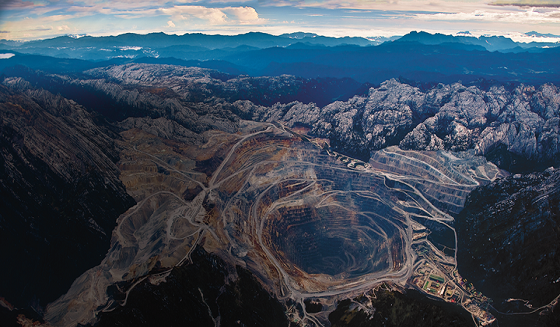Top 5 miners

Glencore may be forced to shut down giant zinc mine in Australia
September 1, 2015
Afghanistan Afghanistan government was accused of corruption in the mining sector
September 8, 2015
In New York trade on Friday copper for delivery in December fell more than 3% at the open, erasing all of yesterdays sharp gains as worries about demand from emerging markets returned to weary commodity investors.
The price managed to stay just above $2.30 per pound or around $5,080 a tonne in afternoon trade, but after many sessions with wild price swings bulls are beginning to lose faith in the metals recovery from July 2009 levels hit last week. Copper is down 19% year to date after a 16% fall in 2014. The metal peaked in February 2011 at $4.58 a pound or more than $10,000 a tonne.
The main culprit behind Fridays weakness was a stronger dollar which rose following a US jobs report that while below expectations still pointed to higher US rates and a boost for the dollar. The greenback is up 16% in a year making commodities more expensive in emerging market currencies creating a further drag on demand when the economies of top consumers, notably China, are already slowing down.
On Tuesday, Chinas Caixin manufacturing purchasing managers index – considered one of best indicators of underlying economic activity and closely correlated with the copper price – came in at a six-and-a-half year low of 47.3. A reading below 50 indicates contraction.
Thanks to its widespread use in industry and construction copper is considered a bellwether for the global economic outlook and Fridays fall back to near six-year lows led to a sell-off among minings majors.
Shares in world number one BHP Billiton (NYSE:BHP) fell 4.1% in New York. The value of the Melbourne-based company which relies heavily on oil and iron ore, the worst performing commodities over the last 12 months, has been cut in half over the last year for a market capitalization of $90 billion.
Thats two-thirds below its highest market value of more than $270 billion in 2011 when it briefly became the fifth most valuable publicly traded company in the world, ahead of giants like Chevron and Microsoft.
The worlds second largest miner based on revenue Rio Tinto (NYSE:RIO) which relies on copper and iron for nearly 80% of its earnings dropped as much as 5.1% falling close to lows hit during the height of the global financial crisis. The Anglo-Australian giants stock has been swinging wildly this year and is down more than 25% since the start of the year. Rio is down 59% from its record market value at the height of the commodity price boom.
American Depositary Receipts of Vale (NYSE:VALE) trading in New York declined another 6% bringing losses for the Brazilian company this year to 47%. The Rio de Janeiro-based company is the worlds number one producer of iron ore, ahead of Rio and BHP and also holds the top spot for nickel output.
While iron ore is up from a decade low of $44.10 a tonne touched in July, the steelmaking raw material is down 20% in 2015 after a 47% drop last year. Iron ore hit an all time high in February 2011 at a price above $190 a tonne. The price of nickel last week dipped below $10,000 for the first time since 2009 and is down 48% over the past year. Nickel reached an astonishing $54,050 in May 2007 and todays sub-$10,000 price compares with a 1993 to 2015 average of $13,600 a tonne.
Vales exposure to these commodities explains why it is the worst performer among the top mining houses. The companys market value ascended to just shy of $200 billion in January 2011, ahead of its main rival Rio Tinto, but is now worth less than $25 billion compared to $62 billion for the Melbourne company.
Glencore (LON:GLEN) was again one of the worst performers on the day, falling almost 6% in London to trade at a record low. The $27 billion company was first floated in May 2011 and two years later the Swiss commodities trader acquired coal giant Xstrata, turning it into the worlds fourth largest miner.
After copper Glencores most important raw material in terms of output and trading is coal where price
destruction happened before any other commodity – the international benchmark Australian coal price hit a high in July 2008 within shouting distance of $200 a tonne but is now averaging in the low $60 range. Coking coals fall has been even more spectacular with premium coking coal falling today to $82 a tonne, the lowest since tracking of the spot price first began. Down 70% from its best valuation, Glencore is now worth $10 billion less than before the Xstrata takeover.
Anglo-American (LON:AAL, OTCMKTS:AAUKY), the worlds fifth largest publicly held mining company in terms of output was pummelled 7.8% in New York with its ADRs now worth 44% less than at the start of the year.
The company with roots in South Africa going back more than a century is, despite its exit from gold mining, arguably the most diversified of the majors thanks to its exposure to diamonds (accounting for around 25% of its earnings) through De Beers and its holdings in Anglo American Platinum. But the slump in rough diamond prices and the platinum bust has seen its market cap tumble to $14 billion.
Anglos now trades 80.5% below its 2011 high when it was worth $67 billion.
Source: www.mining.com


